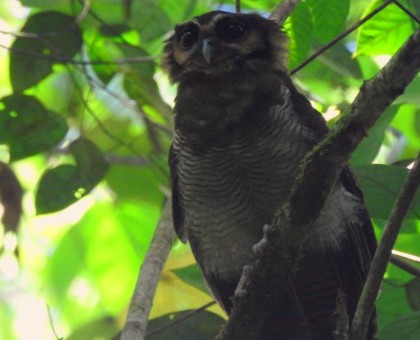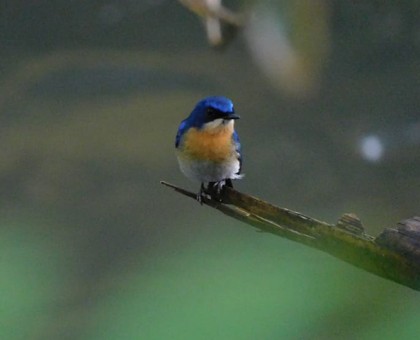15 Jul, 2024
SERIWANG ASIA: THE ENCHANTING BIRD FROM PARADISE
BIODIVERSITY
One day in the Kehje Sewen Forest, our Post-Release Monitoring (PRM) team spotted a small, long-tailed critter perched in a tree. Our team immediately captured on camera this captivating creature and were able to see that was a beautiful white bird. This bird is one of the exotic inhabitants of Kehje Sewen Forest, commonly known as the Seriwang Asia or oriental paradise-flycatcher (Terpsiphone affinis).
The bird we saw in the tree is a male, which can be identified by its longer tail, thick blue eye-ring, more lustrous head, light blue beak and legs, and white body and tail. This differs from the females of the species, who have reddish-brown plumage with eye-rings, short light brown tails, and duller heads.
Read also: THE ENIGMATIC BROWN WOOD OWL
The longer tail of the male Seriwang Asia was caused by sexual selection, which resulted in sexual dimorphism, the phenomenon where males and females of the same species have different body shapes or sizes. These birds are monogamous, meaning they only have one mate. The pairs are very harmonious, working together to build their nest, incubate their eggs, and care for the hatchlings. Their breeding season spans from early March to July, during which time, females can lay two to four eggs that take about two weeks to hatch.
Seriwang Asia are often seen perched alone, as in the photo we captured, because they do not live in groups. They communicate vocally using various songs and calls and our team often hears their “wi wii wiii” calls as they can be one of the loudest birds in the forest.
Like many small birds, the Seriwang Asia is an insectivore, primarily feeding on flying insects such as dragonflies and beetles. They have adapted special hunting skills, darting from branches and catching insects mid-air.
Read also: MIMICRY AND MELODY IN THE FOREST
This bird can be found in tropical evergreen, deciduous, and secondary forests, thriving in lowlands and up to 1,500 m above sea level. Known as a migratory bird, its range extends from eastern Nepal to Southeast Asia islands, including Indonesia, where it can be found in Java, Sumatra, Bali, and Kalimantan.
Originally this bird was considered a subspecies of the Asian paradise flycatcher (Terpsiphone paradisi), but in 2015 the classification was split into three distinct species. Now, called the Bylth’s or oriental paradise flycatcher, its name reflects the bird’s captivating beauty. The IUCN classifies the Seriwang Asia as a species of Least Concern regarding extinction risk, but the population size is unknown. Protecting forests will ensure that this wonderful species continues to sing their songs long into the future!
Text by: PRM Team at Camp Nles Mamse, Kehje Sewen Forest, East Kalimantan






